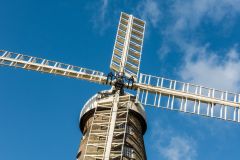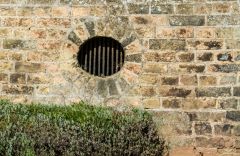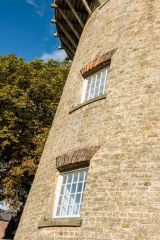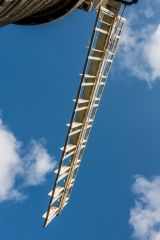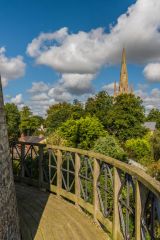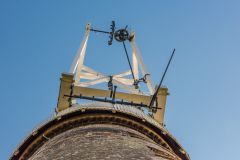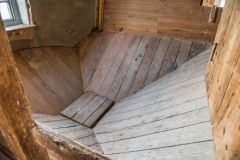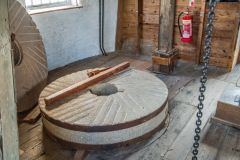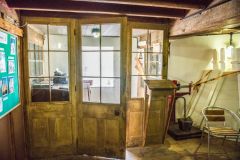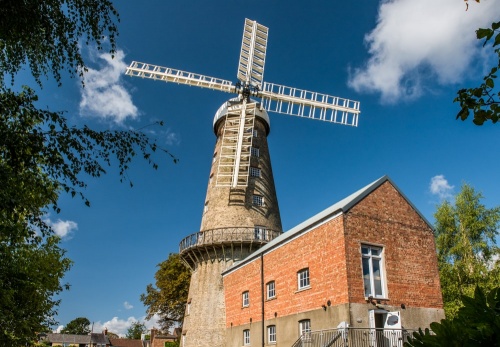
Moulton Windmill is the tallest tower mill in Britain, standing nine storeys high and reaching exactly 80 feet to the curb and 100 feet to the top of its cap. The mill was built in 1822 and it remained in operation until 1995. It has been restored to full working order and is open to the public by a local volunteer charity.
History
Robert King (1786-1868) built the Moulton Windmill in 1822, along with the adjoining granary, and it remained in the King family for over a century. It is somewhat confusing to trace the King family history for each generation seemed to name the first male child Robert.
The Robert King who built the mill was Robert King III, and he had two sons also named Robert (one died before the other was born, so the family named the second son Robert as well). When Robert III died his son James Measure King took over as the miller. James died young of cancer and was followed by his son Arthur Cowley King in 1879. The King family leased the mill to AW Kindall from 1890-1921.
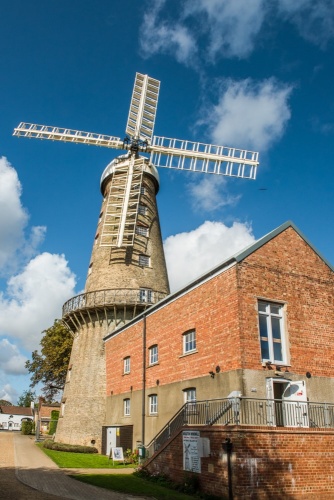
Arthur died in 1923 and by the conditions of his will, his estate was to be sold by his trustees and the money divided equally between his wife Maria and their eight children. So, following the terms of the will, Moulton Windmill was sold in 1924 to a Mr Biggadike.
The Biggadike family milled only minimal amounts of animal feed and for the last few decades of its working life, the mill served mainly as a storage facility for their neighbouring grain store.
The Mill Building
The mill is constructed over brown brick and is nine storeys high (or, more precisely, eight storeys and a basement).
The mill is 18'9" diameter at ground level and 12 feet diameter at the curb. There are three round openings at the basement level. The granary adjoins the east side of the mill and stands two storeys high, obscuring three floors of the mill.
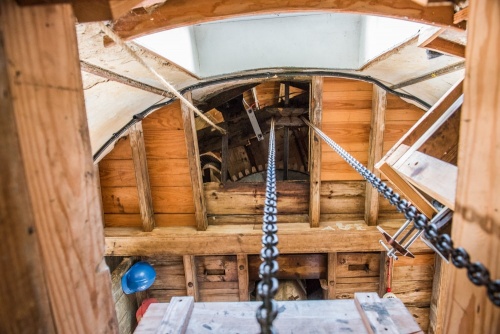
The mill was built with four patent sails, each with 52 shutters, but in 1894 the sails were damaged in a storm. They were removed the following year and a steam engine was installed to power the grinding wheels. In the basement can still see the gearing that transferred power from the steam engine to the spur wheel above.
On the first floor are a roller mill, a Kibbler machine, and an electrically-driven Turner Inkoos Mill as well as a miller's office. On the second floor are storage bins. The third floor was originally the spent floor, where the governor controlled sail speed. There are two pairs of French grinding stones on the fourth floor, while another unused pair is against the wall. Here also is the spur wheel, with eight wooden spokes and cogs.
The fifth and sixth floors hold grain bins, while the upper two floors are empty.
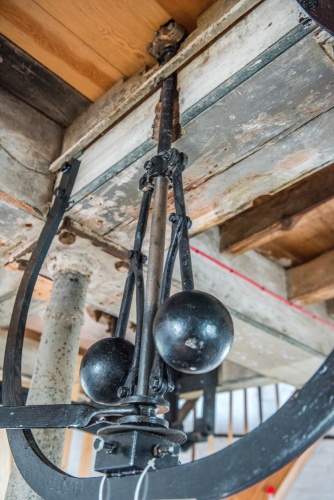
Moulton Windmill was featured in the first series of BBC TV's Restoration programme in 2003. The Heritage Lottery Fund helped provide money to restore the mill's machinery and reinstall the sails. A new ogee cap was also installed and the granary converted into a cafe and shop. In 2013 the mill resumed grinding flour, which can be purchased in the shop.
It is a fascinating experience to explore the mill, guided by a knowledgeable guide. The tour includes the chance to go outside onto the platform, where you can get exceptional views over the rooftops of Moulton and the surrounding fens.
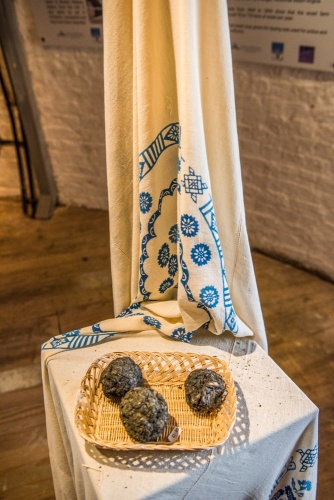
Woad at Moulton Windmill
One unexpected delight on the mill tour is an exhibition on Lincolnshire woad, a plant used for millennia to produce blue dye. For centuries Lincolnshire had a thriving woad trade, with large fields given to growing woad plants and numerous mills for processing the plant material. Development of busy ports like Boston and Sutton Bridge owed much to the prosperity of the woad industry.
As part of the exhibit you can see, smell, and touch woad balls and see the dyes produced from the plant. The Mill has held annual woad festivals to highlight this historical industry and show how woad is grown and processed to create natural dyes.
Getting There
Moulton Windmill is easy to find. It is located just off the High Street (B1357) in the centre of Moulton, a very short stroll from All Saints Church.
About Moulton Windmill
Address: High Street,
Moulton,
Lincolnshire,
England, PE12 6QB
Attraction Type: Historic Building - Windmill
Location: On the east side of High Street down a short lane.
Website: Moulton Windmill
Location
map
OS: TF307240
Photo Credit: David Ross and Britain Express
HERITAGE
 We've 'tagged' this attraction information to help you find related historic attractions and learn more about major time periods mentioned.
We've 'tagged' this attraction information to help you find related historic attractions and learn more about major time periods mentioned.
Find other attractions tagged with:
NEARBY HISTORIC ATTRACTIONS
Heritage Rated from 1- 5 (low to exceptional) on historic interest
Moulton, All Saints Church - 0.1 miles (Historic Church) ![]()
Pinchbeck Engine Museum - 3.1 miles (Museum) ![]()
Chain Bridge Forge - 3.5 miles (Museum) ![]()
Spalding, St Mary & St Nicholas Church - 3.7 miles (Historic Church)
Ayscoughfee Hall Museum & Gardens - 3.8 miles (Historic Building) ![]()
Gordon Boswell Romany Museum - 3.8 miles (Museum) ![]()
Croyland Abbey - 9.5 miles (Abbey) ![]()
Parson Drove, St John's Church - 10.6 miles (Historic Church) ![]()
Nearest Holiday Cottages to Moulton Windmill:
Long Sutton, Lincolnshire
Sleeps: 6
Stay from: £383 - 1467
More self catering near Moulton Windmill
